The history of rangefinder (RF) cameras goes back to the turn of the last century, when Eastman Kodak introduced the world’s first coupled rangefinder in 1917 – the No.3A Autographic Kodak Special camera. However, the popularity of RF cameras didn’t really pickup until after the inception of the small format 35mm camera with the introduction of the Leica II and Zeiss Contax I in 1932.
Since then, RF cameras have carved a place in photography history in documenting World War II and establishing a new genre of photography – photojournalism. Through this, names like Canon, Contax, Leica, and Nikon reined in the photographic world as RF was the photography tool of choice through to 1970s. Today, almost a century after the introduction of the first RF camera, RF still has a significant presence in today’s photography landscape, with Leica, Voightlander (Epson), and Zeiss still producing and developing RF cameras and lenses.
Today’s love affair with RF stems from its physical characteristics – its compact size; its discrete shutter; and the array of excellent optics available. These strengths lend themselves well to street, candid, and travel photography. Beyond the physical mechanics and optics of RF cameras and lenses, many would also profess that there are emotions associated with using RF, to a state of consciousness where their photography senses are enhanced to capture those “decisive moments” in life.
In short, the love for RF is practical and also emotional.
A rangefinder (RF) camera is a genre of cameras which are commonly acknowledged to be discrete and compact, especially relative to their (digital) single lens reflex (D/SLR) cousins. Rangefinders also have available a lineup of superb fast and compact lenses, which makes it an excellent option for available light photography without compromising on image quality. For those reason, many photographers like to use rangefinders for street and travel type photography.
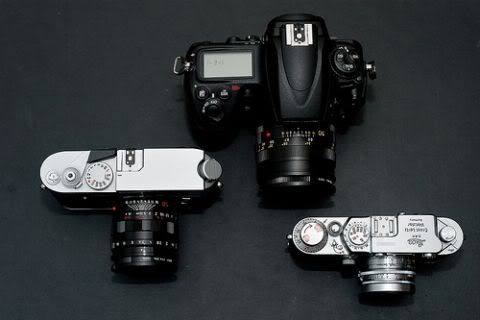
From left to right – Leica M7 with 50mmf/1.4 Summilux-M / Nikon D700 with Leica 50mmf/2 Summicron-R / Leica IIIf with 50mmf/2 Summitar (Collasped)
Rangefinder cameras employ a “triangulation” mechanism to achieve focus (and you thought you would never use your ‘O’ level trigonometry again). This is different from the through-the-lens (TTL) view that many camera enthusiast would be familiar with from the (D)SLRs. RF cameras do not have the mirror box that reflect the image up to the prism box like the (D)LSRs, but this allows the lens to be closer to the focal plan, which particularly helps with the design of wider angle lenses, as well as keep the whole outfit more compact.
RF Viewfinder
The viewfinder provides a separate view from the “through-the-lens” view. This can potentially pose issues when focusing on subjects closer than 2m-3m. However, the viewfinders of modern rangefinder cameras correct for the parallax error, down to 0.7m. The viewfinder has a fixed angle of view, most common would be the x0.72 magnification viewfinder. This viewfinder magnification usually offers the 24-35, 28-90, and 50-75 framelines pairs, the numbers corresponding to the focal lengths of the lens when mounted. Other common viewfinder magnifcation would be x0.58, x0.85 and x1.0, with varied associated framlines (see FAQs on different viewfinder magnification).
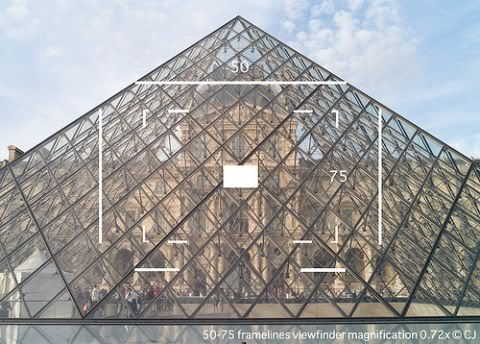
Simulated 50-75 framelines through viewfinder magnification 0.72x, with the focusing patch in the middle. Love it or hate it, but you’ll get to see lots of what’s happening outside your framing.
RF Focusing
The viewfinder provides two images of the same subject, one from the viewfinder itself, and the other from a smaller rangefinder window reflected through a series of mirrors. The smaller image moves as the lens focuses; when the two images coincide, the object is in focus (see base length in FAQs). Some older cameras may not have been lens-coupled, and required separate rangefinding equipment to determine the distance to the subject before focusing the lens to the appropriate distance mark.
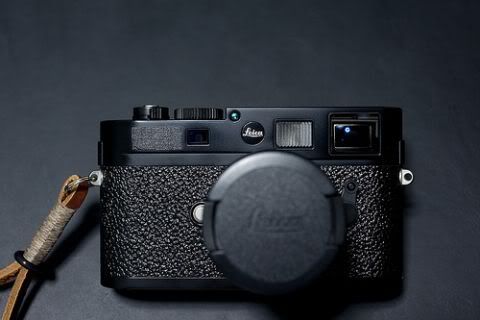
The small rectangular window on the left is the rangefinder window and the large one on the right is the viewfinder window.
RF Curtain
Aside from its compact size, rangefinders are also known to be stealthy and discrete in terms of shutter sound. The most renown would be the Leica leaf / cloth focal plane shutter – this is almost silent when triggered, especially compared to the mirror slap of a (D)SLR. The other useful benefit to this, aside from not scaring away your subject, is that the lack of the “mirror slap” minimizes handshake on triggering – often RF users cite shutter speed as low as 1/8 sec to be still usable handheld with a 50mm lens. However, many of the modern rangefinders use electronic shutters to increase the fastest shutter speed and flash sync speed. The fastest is currently the M8 (version 1) with fastest shutter speed at 1/8000 and flash sync of 1/250.
RF In-Production Models
Digital Rangefinders – Leica M9 / Espon R-D1x (only available in Japan)
Film Rangefinders – Leica MP, M7 / Voigtländer Bessa R2/3/4m R2/3/4a / Konica Hexar / Zeiss Ikon / Mamiya 7ii (medium format)
Some popular discontinued models – Leica M6 / Contax G1 / Hasselbald XPan (panoramic) / Nikon SP / Zorki4 / Yashica GSN (fixed lens) / Minolta Hi-Matic (fixed lens)
RF Common Focal Lengths
There are too many lenses available which are currently in-production and a whole encyclopedia full of possibilities when you consider lenses of older vintage. RF lenses range from 12mm (Voigtländer Ultra-Wide Heliar 12mm f/5.6) at the wide-end, (15mm, 18mm, 21mm, 24mm, 25mm, 28mm, 35mm, 40mm, 50mm, 75mm, 80mm, 90mm) and typically upto to 135mm (Leica Elmarit-M 135mm f/2.8).
As the rangefinder accuracy decreases the further you go with the longer focal lengths, attaching a visoflex or just simply using a (D)SLRs may be better options if you’re looking to shoot with a focal length above 100mm. Short of which, an eye piece magnifiers can help by magnifying the view in the viewfinder (x1.25 – x1.4 available in the market). There are also a x0.85 magnifier available in the market that “expands” the view making it easier to view the outer framelines, which might be particularly helpful to those prefer wider angles or those who wear glasses.
On the opposite side, near focus < 0.7m or macro photography also pose their own challenges, notably with the parallax error. But this is overcomed by the use of special “goggles” which are mounted sit in-front of the rangefinder and viewfinder windows (see what are goggles in FAQs). RF might not the best option for macro photography, but the option is available with the 50mm dual range (with goggles) and 90mm macro-elmar (with macro adaptor max reproduction rate of 1:3).
External viewfinders
If your RF camera viewfinder does not have the frameline for the focal length that you are shooting, there are external viewfinders available which sit in the flash shoe (not all RF shoes are hot). But they can only be used for composition and framing, focus coupling would still have to depend on the cameras viewfinder (assuming the body and lens are coupled).
Camera / Lens Mounts
The modern standard for the 135mm rangefinders are M-mounts (Leica / Voigtländer / Hexar / Zeiss). The previous standard was the Leica Tread Mount (LTM) or screw mounts, aka M39 or L39. The LTMs had 39mm diameter thread base that is screwed onto a screw mount body e.g. old Leica IIIs and old Japanese RF bodies like Canon, Leotax, Nicca, and Tanack. These old LTM lenses have found a new lease of life as they can be mounted on the current M-mount bodies with the use of a M-boynet adaptor (available from Voigtländer), but the compatibility is not true the other way around. The older LTM lenses tend to be a little lower in contrast when compared to the modern lenses, and they have a min focusing distance of 1m. Other common RF mounts include the S (Nikon), G (Contax), and special ones for the Hasselblad Xpan I/II and Mamiya 7/7ii.
Pros & Cons vs (D)SLRs
RF Pros
Discrete
Relatively light and compact
No “mirror slap”, minimizing handshake on triggering
Availability of superb fast and compact lenses (there are the exceptions, esp the larger aperture lenses)
Backward compatibility of old lenses
Composition – you see more of the scene than what is within the frame(lines)
RF Cons
Framing – it is not always as exact as some would like (esp for those use to TTL)
Limited usable focal length at the tele-end
Limted macro ability
No fast zooms (Tri-elmars are the closet thing to it, but they don’t really count)
No entry level digital RF body (at this time)
Can also see
Useful RF Resources
Official sites | Leica (USA) | Voigtländer (DE) | Voigtländer (JPN) | Zeiss Ikon (USA) |
Online resources | CameraQuest | Erwin Putts | Luminous Landscape |
- What is Street Photography? [contributed by gommy]
“Documenting the Human Condition” – http://vimeo.com/6497905
- What is the difference among the different viewfinder magnifications?
There are typically 3 viewfinder magnifications, [x0.52 - x0.6], [x0.7 - x0.74] and [x0.85 - x1.0]. They serve to provide the photographer different alternatives to suit their shooting preference; the x0.52 caters to those who prefer the wider angles and would have as wide as 21mm framelines (view of approx 21mm – 50mm); on the other extreme, the x1.0 caters for those who prefer the tele side, providing a higher magnification and 90mm framelines (view of approx 50mm – 135mm); and the x0.72 would be considered the “normal” magnification which adequately covers the more common 35, 50, and 75 focal lengths (view of approx 28mm – 90mm).

Simulated 50-75 framelines through viewfinder magnification 0.72x
Here are the frameline pairs of common rangefinders (arranged by brand)
Leica M3 (x0.91): 50 – 90 – 135
Leica M6/7 (x0.58): 28/90 – 35 – 50/75
Leica M6/7 (x0.72): 28/90 – 35/135 – 50/75
Leica M6/7 (x0.85): 35/135 – 50/75 – 90
Leica M8 (x0.68): 24/35 – 28/90 – 50/75 [updated 02/12/09]
Konica Hexar RF (x0.6): 28/90 – 35/135 – 50/75
Minolta CLE (x0.58): 28 – 40 – 90
Voigtländer R4M/A (x0.52): 21/35 – 28 – 25/50
Voigtländer R2M/A (x0.7): 35/90 – 50 – 75
Voigtländer R3M/A (x1.0): 40/90 – 50 – 75
Zeiss Ikon (x0.74): 28/85 – 35 – 50
There are magnifiers available in the market, x0.85, x1.25, and x1.4, which attaches to the viewfinder (rear of camera). They can help help widen or narrow your field of view through to the view finder so that you can either have a wider perspective to your view (x0.85) or assist with your focusing accuracy (x1.25 or x1.4).
- Why is the rangefinder base length important?
The rangefinder base length is the distance between the rangefinder window and the viewfinder window (think back to your ‘O’ level trigonometry). This determines the focusing accuracy of the camera, the long the base, the higher the accuracy. However the effective base length is base length adjusted for the viewfinder magnification – the higher the magnification the higher the accuracy.
Effecive RF Base Length (ERB) = RF Base Length (RB) * Magnification Rate (MR)
Here are the approx RF Base Lengths (RB) and Effective RF Base Lengths (ERB) common rangefinders (arranged by brand)
Leica M3: RB-69mm MR-0.91 ERB-62mm
Leica M6/7: RB-69mm MR-0.72 ERB-49mm (MR-0.58 ERB-40mm, MR-0.85 ERB-58.5mm)
Leica M8: RB-69mm MR-0.68 ERB-47mm
Konica Hexar: RB-69mm MR-0.6 ERB-41mm
Minolta CLE: RB-50mm MR-0.58 ERB-29mm
Voigtländer Bessa: RB-37mm MR-0.72 ERB-26mm (MR-0.52 ERB-19mm, MR-1.0 ERB-37mm)
Zeiss Ikon:RB-75mm MR-0.74 ERB-56mm
If you add on magnifiers (e.g. x1.25 or x1.4), you multiply the ERB according to increase your accuracy. Of course, these are just technical calculations, in practice, the brightness of the viewfinder and focusing patch, handling, etc contribute to your focusing accuracy.
- What are “goggles”?
“Goggles” is the nickname given to the finder attachments on certain leica lenses. There are essentially three applications for this, to widen the view of the finder; to narrow the view of the finder; and to adjust the view for close focus / macro.
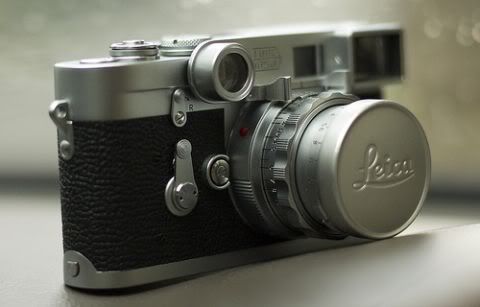
Leica Summicron-M 50mm f/2.0 Dual Range with goggles
Close focus photography use goggles help correct for parallax error down to 0.5m, specifically for the Summicron-M 50mm Dual Range (DR) and the Macro-Elmar-M 90mm. When the 50DR is engaged in close focus, the goggles can be mounted on the top of the lens, while the goggles for the Macro-Elmar90 are mounted via the macro adaptor.
The widening of the view is specific to the M3. The x0.91 magnification of the M3 was such that it could not effectively use the wider-angle 35mm which many people were use to. The goggled 35mm lenses (e.g. summicron and summaron) brought up the 50mm framelines on the M3 and the the goggles were effectively a x0.7 magnifier in-front of the finder to wider the 50mm view to a 35mm view.
The narrowing of the view is specific to the Elmarit-M 135mm with goggles. It essentially runs opposite to the example given in above on the 35mm lens with goggles, the Elmarit-M 135mm with goggles brings up the 90mm framelines, and the goggles magnifies it by x1.4.
- What are the crop factors of the digital RFs?
There are currently only a limited number of digital rangefinders, their crop factors are:
Leica M9 – x1.0 (full-frame)
Leica M8 / M8.2 – x1.3
Epson R-D1 / R-D1s / R-D1x – x1.5
- Are there ways to use the RF lenses on other digital bodies?
With the introduction of the mirrorless interchangable lens digital camera systems such as the mirco4/3 (e.g. Lumix G1 and GF1 and the Olympus EP1 and EP2) and the E-mounts (e.g. Sony Nex-3, Nex-5), M and LTM lenses have found a range of alternative digital body to mounted on. Their are adaptors availbla in the market that will allow you to mount your M or LTM lenses on these digital camera bodies.
The M4/3 and E-mount cameras allow a through the lens view, utilizing the live view or digital viewfinder. Focusing is still manual focus, often with a “magnifier” mode. Your milage may vary when using the these cameras, but it is a definitely a more affordable alternative to the more expensive digital rangefinders. M4/3 cameras are x2.0 crop, while the Sony Nex line are x1.5 crop.
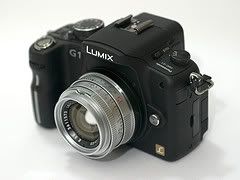
Leica Summicron-M 35mm (LTM) -> M-baynot adaptor -> M-M4/3 adaptor -> Panasonic G1
- What is 6-bit coding? What is with UV/IR filters? [contributed by gommy]
6-bit coding was Leica’s way of allowing the lens to the “communicate” to the digital body (Leica’s first digital body, M8, was launched in 2006), what lens was being mounted. The 6-bit coding is a binary (or black-white) code is able to cater for up to 64 unique codes such that the lens information could be stored in the image metadata (exif).
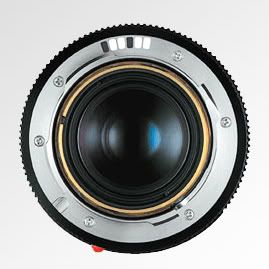
6-bits on Apo-Summicron-M 75mm f/2 ASPH
This also facilitates the in-camera adjustments for vignetting and cyan vignetting which are more pronounced in wider angle lenses. You can send your Leica lenses back to Solms to get coded (not available for the older thick base lenses), or DIY using the well “calibrated” marker (http://matchtechnical.com/coderkit.aspx) and the legend of the codes (http://whimster-photography.com/leic…des/index.html).
As for UV/IR filters, this was a result of an effort to maximise the resolution of the sensor on the M8 by reducing the size of the UV/IR filter over the sensor. This resulted in some infra-red contamination, such as black appearing as magenta in the image. The apparent stopgap measure was the introduction of the UV/IR lens filters – two given free to all M8 / M8.2 buyers, which also had its own set of issues, e.g. cyan vignetting.
With the introduction of the M9 in 2009, the sensor’s UV/IR filter has increased from 0.5mm to 0.8mm, not requiring the additional the UV/IR lens filter. Also, the M9 firmware allows the user to choose from a database of lenses when you mount a non-6-bit coded lens.
Article contributed by Edward Teo aka Cactus Jack
Link to original thread here.
















